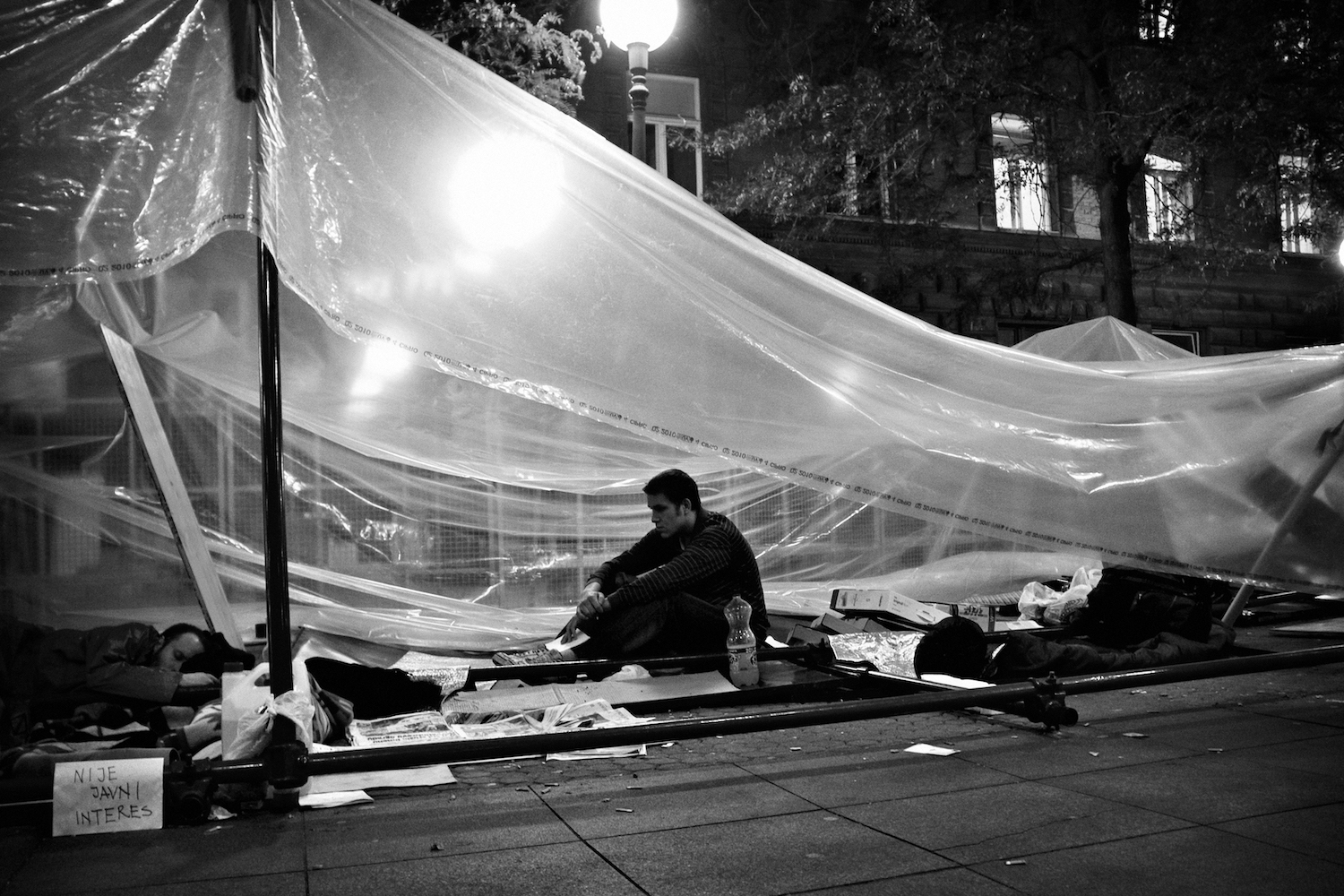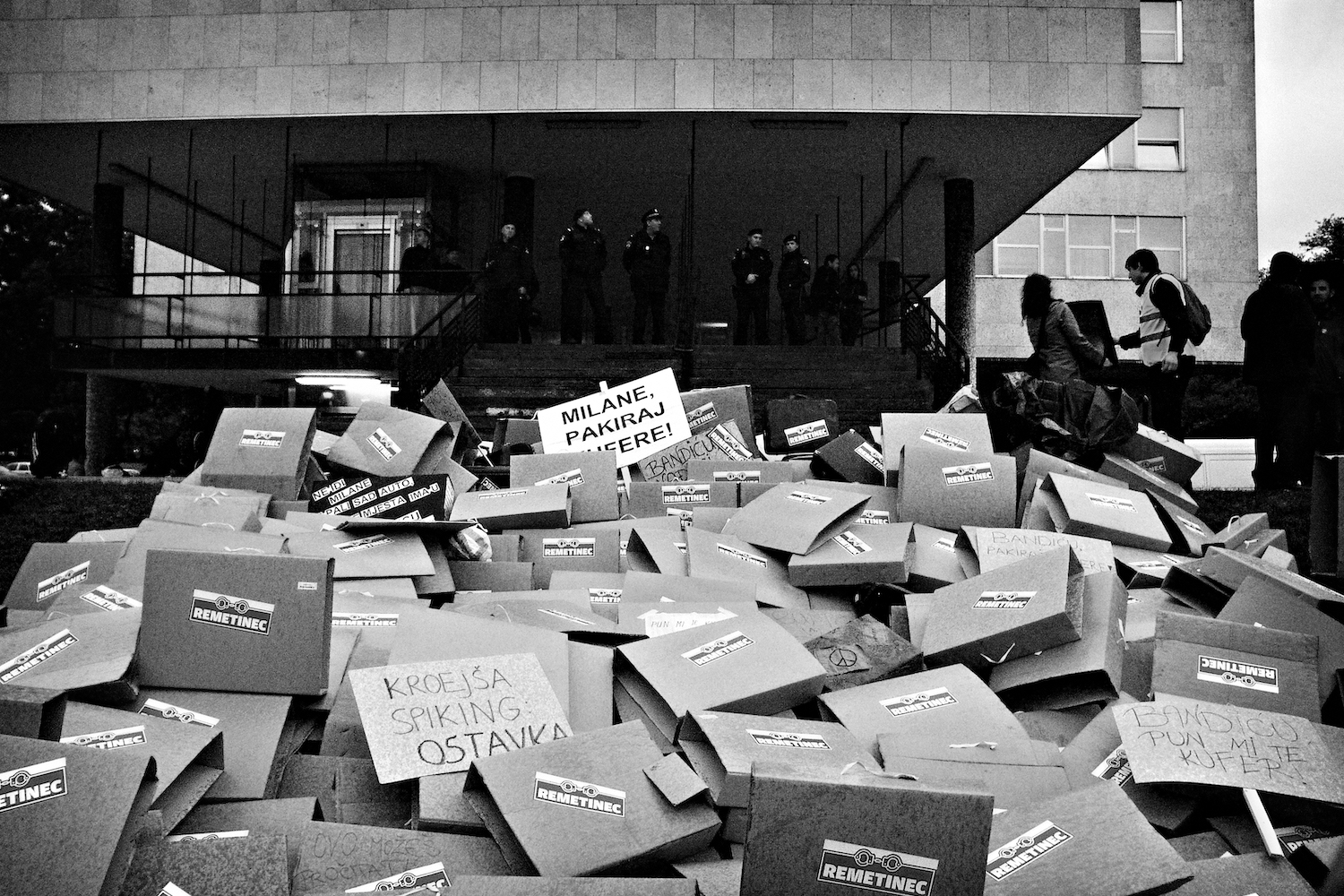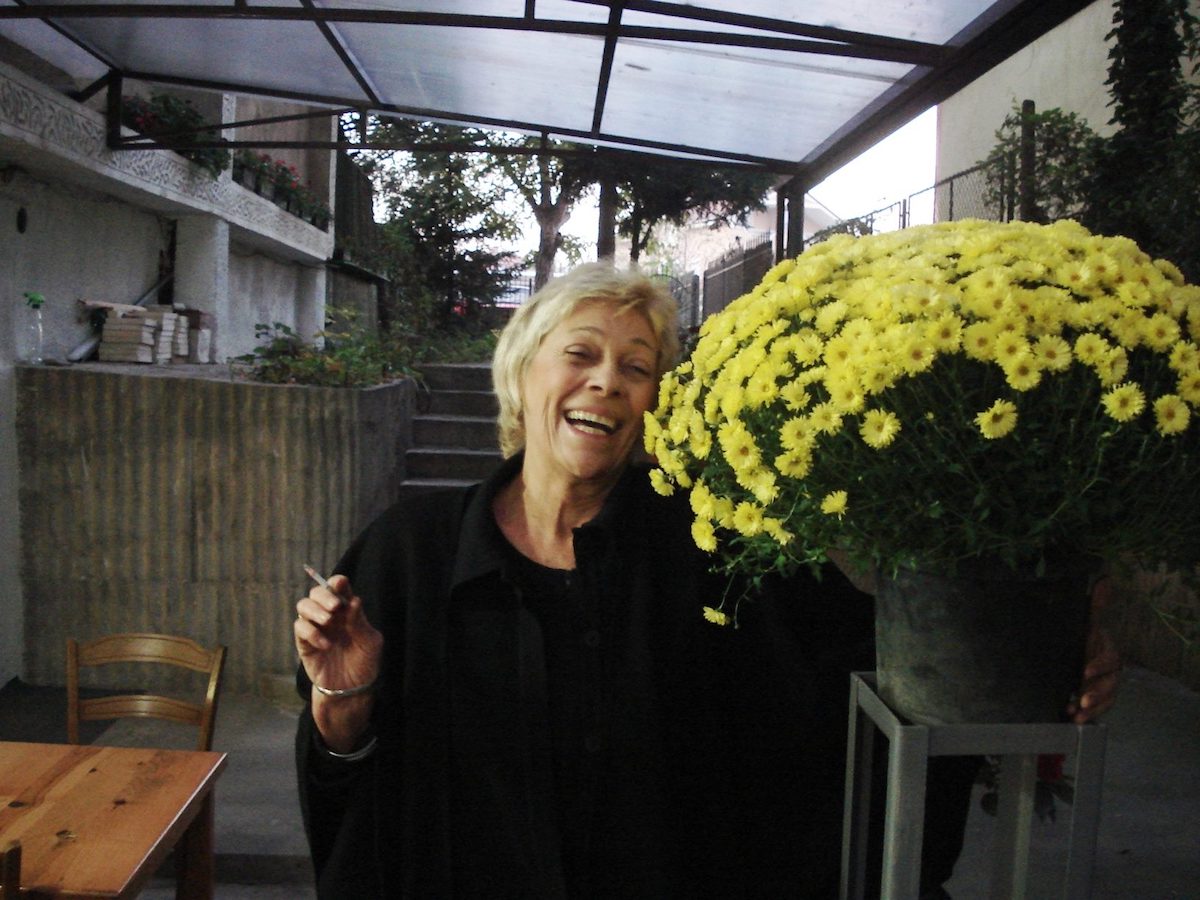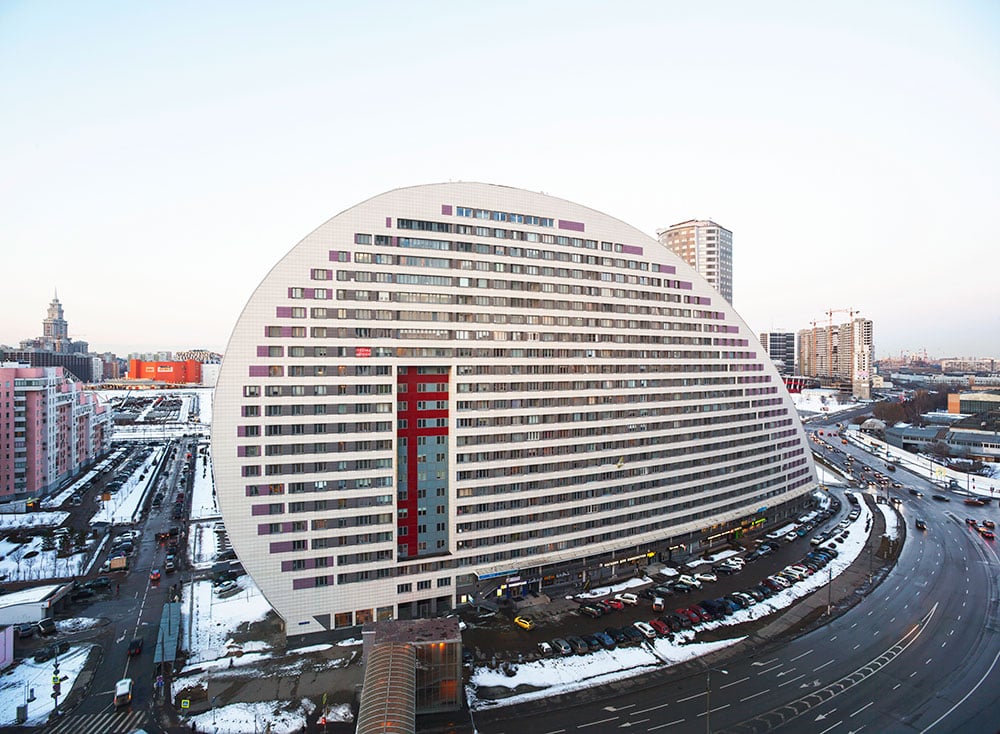The Mayor of Zagreb wants to build Croatia’s own Manhattan — and locals are taking to the streets to stop him
For almost two decades, the mayor of Zagreb, Milan Bandić, has shaped the Croatian capital with multi-million-dollar developments. But now locals want a voice in how their city is changing — and more transparency for City Hall’s business deals.
With its €500m price tag, Zagreb Manhattan is envisioned as a glimpse of the future for the Croatian capital. Positioned where the Sava river divides downtown and the socialist-era residential neighbourhood, Novi Zagreb, the area currently occupied by the historic Zagreb Fair and the city Hippodrome, will be replaced by more than one million square metres of prime development real estate, including homes, offices, promenades, shopping centres, parks, and at least one large skyscraper.
For city mayor Milan Bandić, it is set to one of his biggest achievements. With his showman’s bravado and signature catchphrase (“Idemo delat!” or “Let’s get down to work!”) Zagreb Manhattan plays neatly into the populist photo ops and large public announcements of which the mayor is already fond. In 2007, when the citizens in Zagreb’s Vrbani neighbourhood complained that contaminated water was flowing from their taps, Bandić rushed to drink a couple of glasses in front of the cameras before declaring that “Zagreb has the best water in Croatia”. In a similarly public show in 2015, he took to the streets before dawn with a hose to “show to the city’s employees how to clean better”. He never fails to be snapped eating the traditional bean soup that’s served across Zagreb for the city’s Labour Day celebrations.
Bandić, however, is now serving his sixth term as mayor, and some of his tactics have lost their shine. Large-scale public spending has come under particular scrutiny, and Bandić is well-known for his lavish taste. In 2009, the media discovered that authorities had shelled out an eye-wateringly inflated €11,000 per square metre for a public toilet. In 2017, €3m was spent shipping 900 cubic metres of snow to the city centre for a single ski race. For Bandić, a gleaming Zagreb Manhattan would a major achievement. For many of the city’s residents, it is a step too far.
So far, Croatian NGOs, professional associations for architects and urban planners, and locals themselves, have all opposed the project on different legal and environmental grounds. Far from boosting the city’s economy, many believe that the mega-project could irreparably damage the capital’s delicate urban fabric.
“Zagreb needs lots of things, but it does not need an extra 50,000 square metres of living space with no adequate infrastructure,” says Gordana Domić, an architect employed at the Faculty of Architecture in Zagreb, in a phone interview with The Calvert Journal. Domić is also a member of Društvo Arhitekata Zagreb (Zagreb Architects’ Society), one of the professional associations that has opposed the mayor’s plans on the grounds that city officials did not consult the public or comply with planning procedures. Like many others, Domić believes that the project is a costly distraction from the city’s real urban ills. Zagreb suffers from old and outdated infrastructure, a public transport network that still falls short of its real potential, and a lack of parks and green spaces. The decidedly unsexy yet stubborn problem of waste management remains a burning issue for city planners. But neither Zagreb’s Manhattan, nor the city’s new proposed general urban plan, tackles any of these issues in the way they need to be addressed.
Champions for the project argue that the development is the perfect vehicle to bring outside investment into Croatia. Abu Dhabi-based investment firm Eagle Hills has been selected as a key investor, and in March 2019, Bandić flew to Dubai to sign a memorandum of understanding with the company chairman, the Emirati businessman Mohamed Alabbar.
This, however, has sparked further concern for protesters. Details of the memorandum only became public knowledge in August 2019, almost six months after it was signed. The information was not released by the local government or municipal authorities — who had classed it as a “commercial secret” — but by a journalist from Croatia’s RTL television who was able to see the document. She revealed that Bandić had agreed to obtain all of the company’s required permits and make changes to Zagreb’s general urban plan within the next eight months: a revelation which explained some of the politician’s latest zeal to fast-track the project. As public pressure grew, city authorities finally agreed to publish the memorandum in full.
Dozens of balaclava-clad men with basketball bats and bulldozers flattened several buildings on the development’s future site under the cover of darkness. Bystanders were tied up, but the police did not respond to citizens’ calls.
The episode has not quelled public unease. The Eagle Hills development company is already well-known in the region as the developer behind Beograd Na Vodi (Belgrade Waterfront), a multi-billion-euro revitalisation of a huge swathe of riverfront land in the Serbian capital. It also faced strong opposition from citizens and NGOs due its lack of transparency, although development ploughed on.
Tensions reached their peak on the night of 24 April 2016, when dozens of balaclava-clad men with basketball bats and bulldozers flattened several buildings on the development’s future site under the cover of darkness. Bystanders were tied up, but the police did not respond to citizens’ calls. Even today, the identity of the perpetrators remains unknown and details on the project’s workers and sub-contractors remains hidden from the public.
Some fear that Bandić’s deal could see similar issues of over-inflated prices and opaque business deals in Zagreb. Despite its other urban flaws, Domić singles out the non-transparency surrounding the project as its main issue. “When somebody pushes for a project in this way — without public debate, without consulting the professionals — they behave like an absolutist ruler of the city. It’s as if the city was their private property,” she says.
While Zagreb Manhattan may be unprecedented in terms of size, it’s just one of the latest urban projects to spark run-ins between the local authorities and Zagreb citizens.
Tensions first began to boil almost a decade ago with the development of the capital’s Varšavska street: a boulevard in the heart of the city that also hosted Zagreb’s Europa Cinema. The plans saw cultural buildings demolished to build a shopping mall and an underground garage.
“The public presentation of the project took place in January 2007 — and it wasn’t really public. It was open only for people invited by the city authorities and the investor,” remembers Bernard Ivčić, head of Zelena Akcija (Friends of the Earth Croatia), an environmental NGO that has been one of the most prominent voices of Croatian civil society for over a decade. “We learnt then that they wanted to demolish buildings with cultural heritage status and to reduce the pedestrian zone in Varšavska,” he says. Like many activists, he believes that many of the problems that plagued the development back then can still be seen in today’s Zagreb Manhattan plans. “There is no concrete information about what is really going to be built, and the city authorities are trying to fast-track the project, which is very beneficial to the developer,” Ivčić says.
Protests against plans to cut the pedestrian area on Varšavska Street. Image: Tomislav Turković
Zelena Akcija and other civil society groups filed complaints and staged a series of demonstrations, culminating in a sit-in protest in July 2010 designed to halt construction. Police eventually arrested 140 people who took part in the peaceful demonstration.
In the end, the protests weren’t enough to stop the construction work. A large mall now stands adjacent to the central Cvjetni Square, while Varšavska Ulica’s pedestrian area has been slashed to make way for underground parking.
The protest movement itself, however, was not in vain. The civil engagement born in the Varšavska protests spurred the creation of other similar civic initiatives. Over the past couple of years, dozens of neighbourhood-based groups have appeared across Zagreb: a remarkable feat considering Croatian citizens’ general reticence for street protest. But some are even starting to rack up major victories.
One of the most active groups is Savica za Park, an initiative formed in Zagreb’s Savica neighbourhood in 2016 to oppose the construction of a church on one of the area’s precious few green spaces.
“This project was supposed to happen under my window, literally,” remembers Savica resident Suzana Dobrić-Žaja, speaking in a phone interview with The Calvert Journal. As a trained architect, Dobrić-Žaja knew when she saw the plans that any building would eat away at the park until little was left. She joined some 12 to 15 other locals, who organised protests and events to spread the word about the project. They also filed formal complaints on various mistakes or illegalities they found in the project’s documentation. Opposing the church — particularly in Croatia, where some 85 per cent of the population is Catholic — was no easy feat.
The discontent is also spreading beyond large developments to other areas of Zagreb’s urban fabric
“It was pretty challenging to find the right way to communicate about our actions, and to explain we were not against the church, just against losing our park to it,” says Dobrić-Žaja.
But success came when officials refused to deliver a building permit for the church. Constructions was stopped. Today, in Zagreb’s proposed updates to the city’s general urban plan, the park in Savica was granted better protection, meaning, among other things, that all the future construction work would need to be subject to public tender. All the same, Dobrić-Žaja and Savica za Park don’t support the plan — “we decided that we couldn’t support a plan that is so bad for the city”.
The discontent is also spreading beyond large developments to other areas of Zagreb’s urban fabric. In April 2019, the Zagreb Film Festival (ZFF) — the art organisation that has managed the capital’s Kino Europa for the past decade — was ordered to hand over their building to the state, without the opportunity to extend their lease on the property. City authorities said they would renovate the historic building, but many fear that after the renovations, the building will no longer serve as a cultural hub, but will be, as many other spaces in the city centre, leased for commercial use. On the day the news broke, some 2000 people appeared outside the cinema — a considerable turnout for an impromptu protest in Croatia — to show support for the cinema’s management and demand that it stayed open.
Boris T. Matić, director of the Zagreb Film Festival, says the letter asking them to vacate the premises caught them off guard. “We had sent them letters and letters to ask about the contract prolongation. And then they announced it to us in a letter - less than half a page long - that we were being kicked out of the venue. It is like ending a marriage via an SMS,” Matić told us in an interview. At the end of June, the Zagreb Film Festival organisation returned the keys to the City authorities. The cinema’s future is still uncertain – the building is currently closed and the renovation work is yet to begin.
“Bandić uses funds and logistics of the city as a carrot and a stick,” says Marko Torjanac, director of an independent theatre Planet Art and a deputy in Zagreb’s City council. Torjanac sat on one of the committees charged to evaluate cultural programs. “It was soon clear to me that most of the people in these committees depend financially on the City and will sign everything they ask them to sign. The whole system is set up to reward those who are loyal, and punish those who are not.”
For now, the future of Zagreb Manhattan remains unclear. The Croatian government hasn’t taken a clear stance on the project, with Prime Minister Andrej Plenković declining to publicly endorse or condemn the plans. Some believe that reluctance to take a side may be a calculated move designed to gather as much support as possible ahead of next year’s parliamentary elections. He’ll have to call the shots soon enough, as the changes in the city’s master plan could get to the national Parliament’s agenda by the end of this month.
In the city council itself, meanwhile, Bandić faces a dynamic opposition, led by the movement Zagreb Je Naš (Zagreb is Ours). Led by green activist Tomislav Tomašević, Zagreb Je Naš has been among the most prominent critics of Zagreb Manhattan.
But it is the organisation on the streets that seems better co-ordinated — and more powerful — than ever before. Some 20,000 residents have lodged comments or questions on the proposed modifications of Zagreb’s general urban plan, all of which need to be analysed and answered. In the meantime, NGOs are organising protests and the media is following the story closely.
Zagreb Manhattan may yet rise from the city’s skyline — but civil society is rising too.




